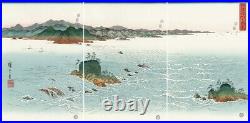
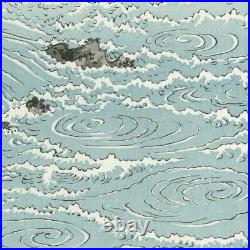
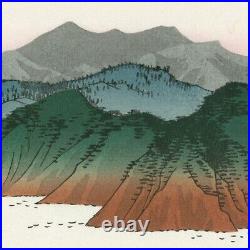

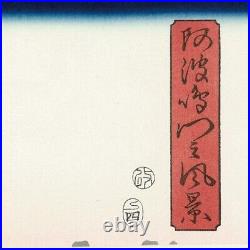
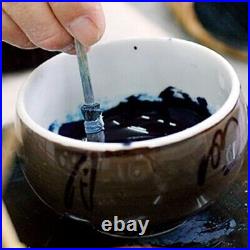

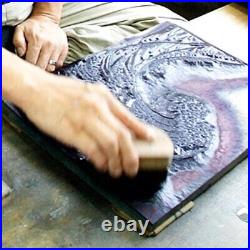
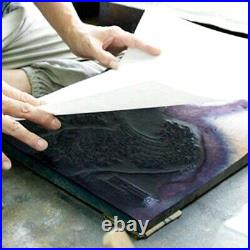
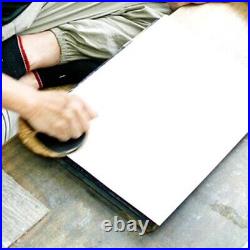
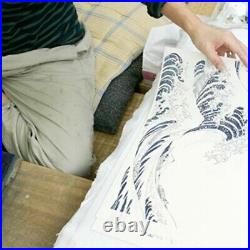
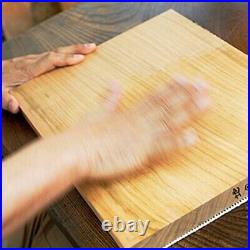
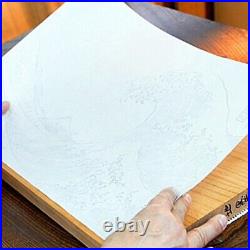
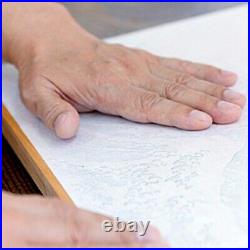
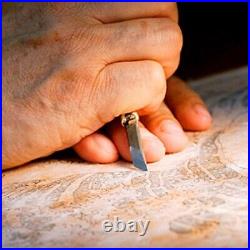


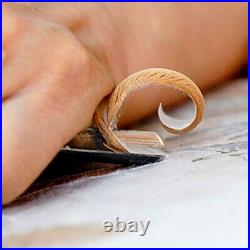

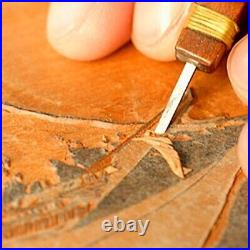
This product is a reprint of Ukiyo-e? What is the difference between reprinted ukiyo-e and ukiyo-e produced in Japan’s Edo period? It makes no difference. The only difference is the era in which they were made. The woodblocks are re-carved and hand-printed one by one on traditional Japanese paper. The greatest attraction of ukiyo-e is the unique soft texture of Japanese paper and woodblock prints, and the vivid colors that people of the time must have enjoyed. ¦Image size:14.96inch × 29.92inch. ¦Paper:Washi(Japanese traditional paper:Echizen Seiji Hosho). ¦This is a triptych that compares the wave crests of the ferocious whirlpools of the Naruto Strait to flowers. The contrast between the pale indigo of the surface of the water and the green of the peaks of Awaji Island in the background brings brightness and softness to the picture. The swirling patterns and mountains that fill the screen make us imagine the horizon in the distance and make us feel the boundless vastness of the sea. Compared to the snow (Kisoji-no-Yamakawa) and the moon (Buage Kanazawa Hassho Nightscape), it has the brightness of spring. In the Tenpo era, all 55 paintings of “Fifty-three Stations of the Tokaido” published by Hoeido became a big hit, and since then he has painted many landscape paintings of the Tokaido. He also left outstanding poetic works in his paintings of flowers and birds, and in his greatest series, One Hundred Famous Views of Edo, which he worked on in his final years, he depicted the seasonal scenery of Edo from a unique perspective and rich sensibility. The series is also known for being copied by Van Gogh.
No comments